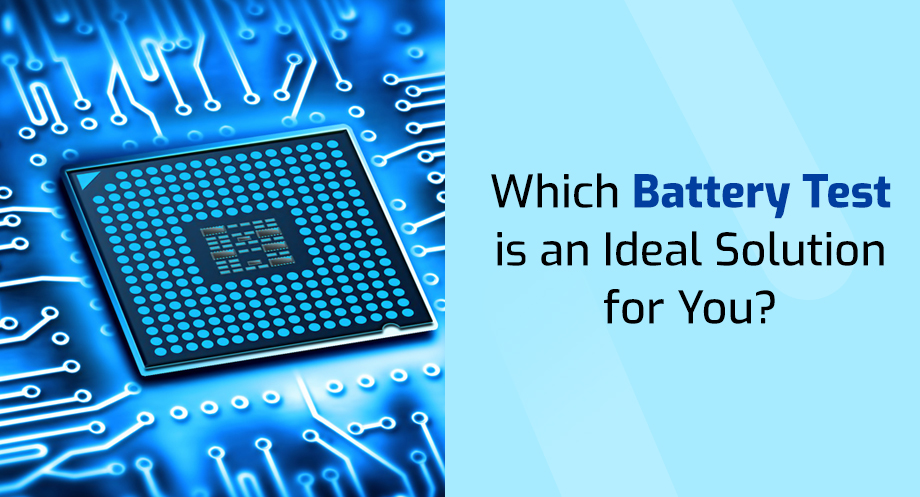Battery tests are performed to diagnose ineffective batteries and preventative measures to verify if a battery is sound. However, not all testers are made equal. They include different technologies to verify multiple facets of a battery’s health. Hence, which battery tech should your equipment possess?
This blog post will highlight different technologies, how the results can vary, and which test technologies are suitable for different applications.
The Battery Test Technologies Available
It’s all about one or more levels extensive to acquiring a precise representation of a battery’s health.
-
Conductance Tech Stack
The most basic one and discoverable virtually on every battery test device that is developed beyond a simple DVOM. This tech stack is formulated to test a battery’s proficiency to turn over an engine, firing it up so that the car gets running.
Conductance technology uses a micro load on the battery for a short period- only a few seconds. The voltage reaction is measured. This particular conductance measurement relates to the battery’s cold cranking amperage, which is vital for starting an internal combustion engine. Without formulating expansive discharge tests, conductance is employed, coupled with other battery information, to expeditiously and securely decide a battery’s competency to start the engine.
-
Conductance Profiling
A different approach is required to diagnose the battery’s health far beyond the basic capacity to crank the engine over. At present, vehicles are heavily accessorized as compared to the past generations, and the consistent electrical pull on the system needs an additional foot in the diagnostic process. A system like auto-start-stop, lane departure warning, sophisticated infotainment systems, etc.
The test performed for ongoing vehicle load support is termed conductance profiling and it verifies a battery’s capacity to support loads on the battery over a long time interval, which is why conductance profiling is useful.
This sort of testing protocol implies a larger load for a longer duration than conductance- a 10-amp load over nearly 60 seconds. It evaluates the battery’s response under load to decide if the battery manifests signs of reserve capacity lower than 50% of its rating.
-
Dynamic Charge Acceptance
Another critical feature of battery health that is often overlooked during the diagnosis is charge acceptance. Where other respective tests decide the battery’s ability to apportion energy on demand, charge acceptance assesses its capacity to recharge its energy stores. In a few cases, the battery is unable to absorb energy at the rate it was engineered. This is a serious concern with vehicles created to boost fuel efficiency by lowering the time utilized in engaging the alternator and charging the battery.
Dynamic Charge Acceptance technology consumes an average of 5 minutes to diagnose the battery. The battery is initially tested using Conductance Profiling Technology (60 seconds) to decide the battery’s capacity performance. The battery is supervised while loaded with 300A to imitate a start event (60 seconds). The charge is then applied to the battery and its monitored to demonstrate its ability to accept a charge (about 2-3 minutes).
Additional Test Tech Stacks
Other technical considerations for battery testing equipment encompass what you might regard as circumferential systems. VIN scan technology assists shops make certain the right test outcomes are reported for the right vehicle. It’s important and helpful in warranty situations particularly, helping manage compliance with the battery manufacturer or OEM.
Besides, a printer may or may not be of significance. If the warranty code requires a hard copy, then a printer is a must.
Which Battery Testing Technologies are Ideal for Diverse Applications?
Not every formula is carved in stone, as every repair facility is different. Conductance testing might not suffice your need to capture the battery’s actual state of health. As it cannot check for conductance profiling or charge acceptance, you’re likely to miss issues that might result in decisions such as Replace Battery and Bad Cell: Replace or Misread results like Good-Recharge or Charge and Retest. A more sophisticated approach and results help market more batteries and build reliable trust with patrons.
Our battery testing equipment at Apple Energy is well-equipped with conductance technology including the CPX, DSS, DCA, MDX, and EXP series. Concerning conductance profiling; consider the DSS and CPX series of testers and the DCA series of diagnostic chargers. And as for charge acceptance, the DCA series is your ideal bet with all three tech stacks available, testing start events (cranking health through Conductance), vehicle load support (reserve capacity health through Conductance Profiling), and cycle applications (charge acceptance through Dynamic Charge Acceptance technology) within five minutes.
